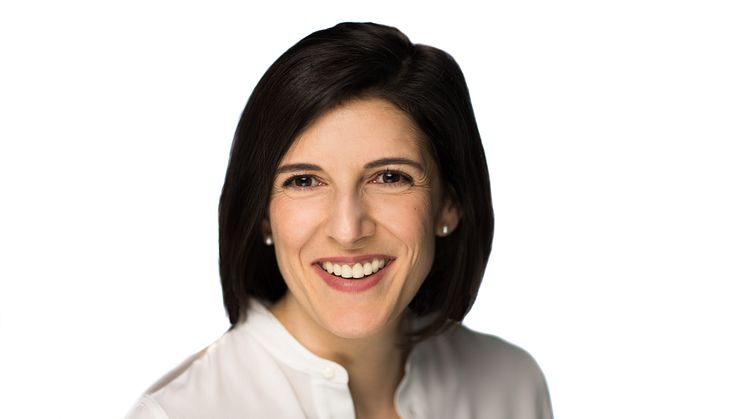
Blog post -
WEARABLES WILL TRANSFORM THE HEALTHCARE INDUSTRY
Angela Gallego, Head of Product Development, has been working at Isansys since it was established in 2010.
For the last two years, she has been working with a number of hospitals and healthcare service providers to deliver patient monitoring services and patient status solutions based on the first generation of Isansys’ Lifetouch device and Patient Status Engine (PSE) platform.
Isansys is now about to release the second-generation devices and systems in line with the next wave of market demand, and Angela is working closely with clinicians and nurses so that they can know when their patients’ hearts are racing, or their blood pressure is on the rise, even if they’re sitting at home. This new development is being driven by a burgeoning demand by healthcare providers for innovative, market-ready solutions that can enable improved patient monitoring and alerting both in hospitals and at home. Such solutions improve the quality of life and care of the patients while freeing up nurses to concentrate on other tasks than recording a patients’ vital signs.
With patients connected wirelessly to the PSE system which incorporates a Lifetouch cardiac monitor – a lightweight and unobtrusive ‘smart patch’ that collects data directly from the patient and analyses every heartbeat to provide continuous heart rate, respiration rate and heart rate variability – doctors are able to track the ups and downs of patients’ conditions as they go about their lives.
As well as providing cloud-based patient digitisation and analytic solutions that continuously measure patients’ vital sign data in real time, the system also includes a remotely triggerable ECG visualisation function for set-up and verification that may also be used as an event marker. The Lifetouch, along with the Lifetemp (a continuous wireless clinical thermometer), a wireless pulse oximeter and a wireless blood pressure monitor, ensure that a patient’s physiology is automatically uploaded as a series of secure digital files to a patient record.
“Remote monitoring is extremely important and is at the forefront of the healthcare industry now,” says Angela, who is also closely involved in preliminary deployments at a number of NHS hospitals. “What Isansys is doing is revolutionary in the way it’s not focused solely on remote monitoring, but in providing a complete end-to-end service which allows continuous analysis of the data it’s collecting and presenting to clinicians. It’s so exciting to be part of it as it will ultimately transform the face of healthcare.
“We’re collecting data in real-time, 24-hours a day, and, with this, we can go from looking at a very small number of data points to analysing hundreds of readings per second from thousands of patients. We have already been able to detect patterns in the data collected from the patients wearing our device, which not only monitor their vital signs but will also flag up any warnings signs of deterioration early.
“The potential for this is huge and will have a massive impact on people with real illnesses as it will not only help improve their lives and the treatment they are receiving but could ultimately save their lives.
“At one hospital we’re working with, it was sad when we first went in and saw the patients, especially the young children, having to remain in their beds to have their vital signs read.
With this technology now available, we’re giving them then chance to get rid of the cables and give them some freedom. Patients can walk around and children can play and still be cuddled by their loved ones, whilst all the time being monitored.”
But, Angela says the PSE and Lifetouch works on another level though, as on top of its ability to provide patients with greater freedom, it also collects continuous and high-quality physiological data that meets the complete technical, clinical and regulatory needs of clinicians and other healthcare professionals. This anonymised, encrypted individual patient data is kept in a high security data store from where it is then delivered to authorised care professionals.
“This type of data collected opens up so much more information for the nurses and clinicians,” says Angela. “It allows them to know a lot more about their patients and so not only improves the patients’ outcomes but reduces the number of adverse events.
“Currently we’re reconfiguring the PSE to provide warning notifications of sepsis in patients at home within the 72-hour critical period. This will allow the patients’ care teams to have remote 24/7 access to their vital sign data and early warning indicators, and also provide a communication channel to patients for real-time feedback and support. This brings peace of mind to the patients and their families and allows everyone involved to more confidently engage in the recovery and rehabilitation programmes.”
Angela says she can see enormous potential in the PSE and Lifetouch and feels extremely lucky and proud to be part of a company and project that will, and is, changing not only people’s lives but the way healthcare will be provided globally in the future.
“For nurses and clinicians, this type of information is invaluable,” she says. “They’re getting data collected, analysed and presented to them in a way that they’ve never had before, are discovering new patterns, and can use this information to change the way they treat and diagnose their patients as a result of this. It’s quite extraordinary.
“The potential of the data collected is so huge, even we can’t comprehend all the hidden information behind the data we are collecting that still needs to be deciphered.
All we know is we’ve only unlocked a small proportion of what the PSE and Lifetouch is capable of and it will be exciting to see what else we can read from it, and what other data we can collect with the PSE and Lifetouch. This won’t happen tomorrow, or the day after, but we will get there and, we will be able to collect continuous data from patients both in the hospital and outside the hospital walls.”
